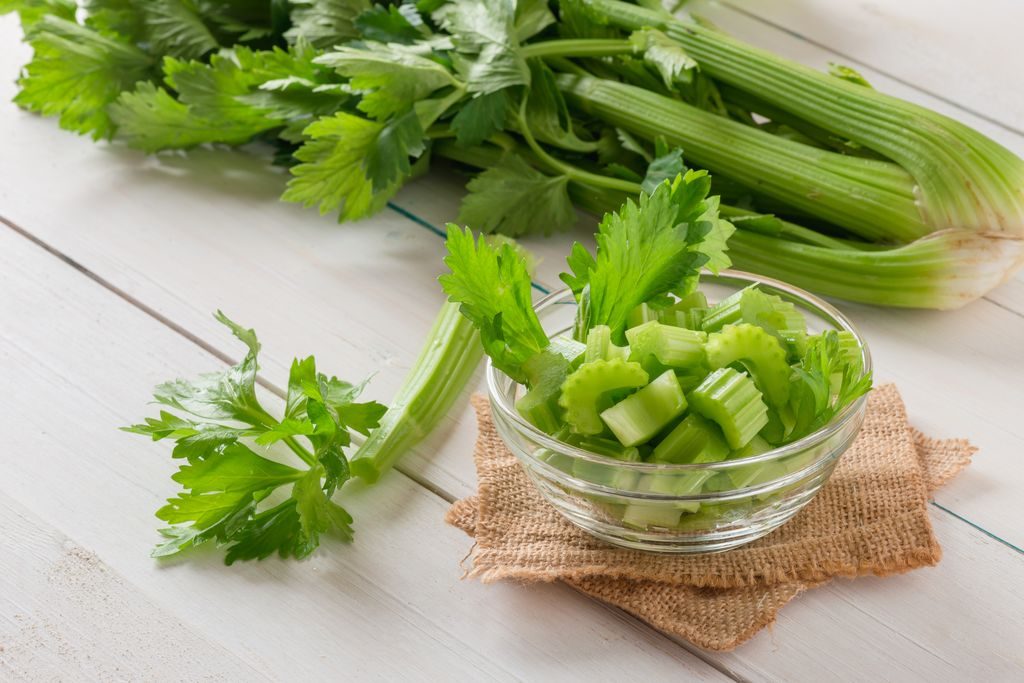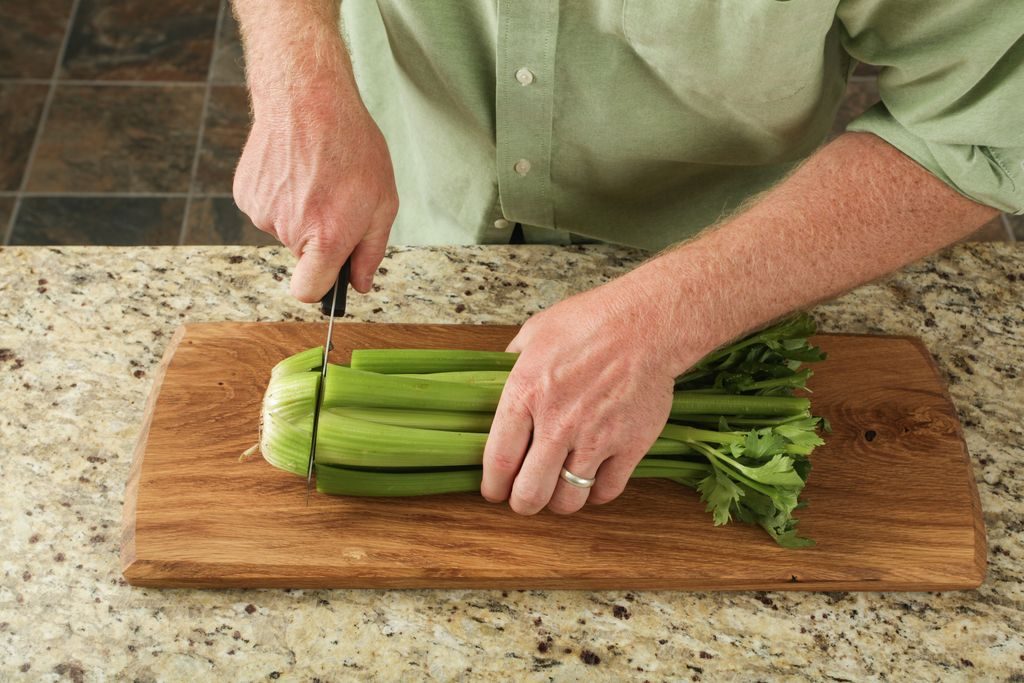Celery
Celery is a crunchy green vegetable with long stalks. It can be eaten raw or used in an ingredient in soups, stews and sauces.

Celery is a vegetable with long and fibrous stalks (also know as sticks or ribs) and dark green leaves at the top. You can either buy celery pre-cut or when the stalks are still connected at the base- this is known as a head of celery.
Fresh celery has firm and crisp stalks with no brown patches. When it’s fresh you can use it raw in salads to add texture, smoothies, juices or you can cut it into strips and eat it with dip. A surprisingly delicious combination is celery and peanut butter! Peanut butter is chocked full of protein and monounsaturated fats! Opt for a peanut butter with no added sugar for a quick and healthy snack!
In cooking the combination of celery, carrot and onion are called a mirepoix (or a soffritto in Italian) and it is used in a huge variety of dishes including soups, stews and sauces like the Italian classic bolognese.
To make a mirepoix simply sautée finely chopped vegetables with oil or butter until soft. The ratios are commonly 50% onion, 25% carrot, and 25% celery.
Celery that is past its best is floppy and has lost some of its crunches, but don’t despair! It can still be used in making stock!
The leaves can also be eaten! You can use them in pestos and salads. You can also dry them to make celery salt.
Preparing celery

When you want to use celery you need to start by removing them from the head – do this by cutting or simply pulling them off by hand.
Only remove as many stalks as you need and leave the rest attached to the head. Leaving the stalks you are not using attached to the head will keep them fresher for longer!
Once the stalks have been removed they need to be washed thoroughly and the ends should be trimmed.
Nutritional information
Celery has a multitude of different health benefits that can help improve your health and wellbeing. it’s loaded with vitamins A, B, C and K and magnesium, potassium and folate.
Celery is very low in carbohydrates. There are only about 16 calories per 100g of celery and 2.97g grams of carbohydrate (of which most are fibre). It also has a fat content of 0.
Vitamin K has many important functions, including helping your body clot blood properly, it helps regulate calcium levels and helps with bone maintenance.
Potassium can help to regulate blood pressure and vitamin A can strengthen your immune system.
Recipe suggestions: Bolognese sauce (ragu)




